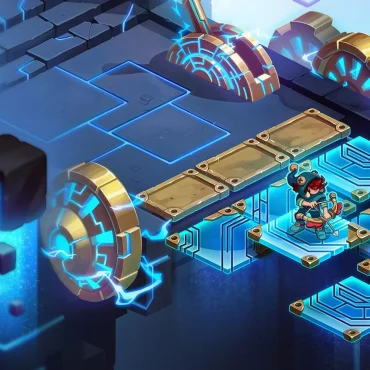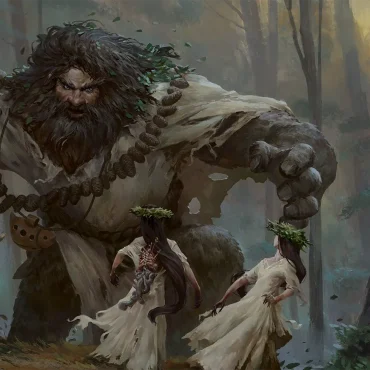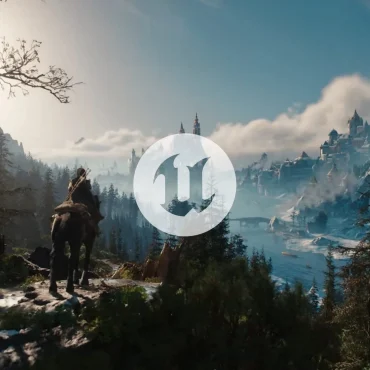Considering realistic vs stylized art is one of the first big decisions in game development, and your choice will shape the direction of your art production team from day one. Should you aim for lifelike visuals that appeal to broad audiences, or bold, stylized designs that help your game stand out? Choosing the style for your game is more than an artistic choice — it affects technical aspects, budget, and how players connect with your world.
In this article, we’ll explore what sets hyperrealism and stylization apart, weigh the pros and cons of each, examine when to use them, and take a closer look at the hybrid trend of stylized realism art.
Realistic vs. stylized art styles: What’s the difference?
When we talk about “realistic” game art, we mean visuals aiming to mimic real life as closely as possible – often termed hyperrealism when pushed to extremes. Think of games where you might mistake a screenshot for a photograph. These titles use advanced 3D modeling, lighting, and shaders to replicate the real world with high detail, striving for photorealistic textures and believable animations. Classic examples include Call of Duty’s gritty battlefields or Red Dead Redemption’s Old West scenery, The Last of Us Part characters – games that chase lifelike detail to immerse you completely in their worlds.
On the other end of the spectrum, stylized art throws reality out the window in favor of creative interpretation. Stylized games use deliberate approaches – from cel-shaded or hand-drawn textures to exaggerated character proportions and fantastical color palettes. Rather than copying life, these games interpret it. Think of the whimsical landscapes of The Legend of Zelda or the painterly 2D look of Cuphead. Stylized visuals emphasize imagination over accuracy, which can give them a timeless, expressive quality.
In short, realistic graphics aim for authenticity, while stylized graphics aim for artistic identity. It’s worth noting that these are not strict binaries. Many video game art styles fall along a continuum. Some games blend elements of both approaches – using realistic lighting but cartoonish characters, for example. We’ll talk more about this stylized realism hybrid later on. But first, let’s compare the benefits and drawbacks of going full realistic vs stylized graphics.
Pros and cons of hyperrealistic graphics
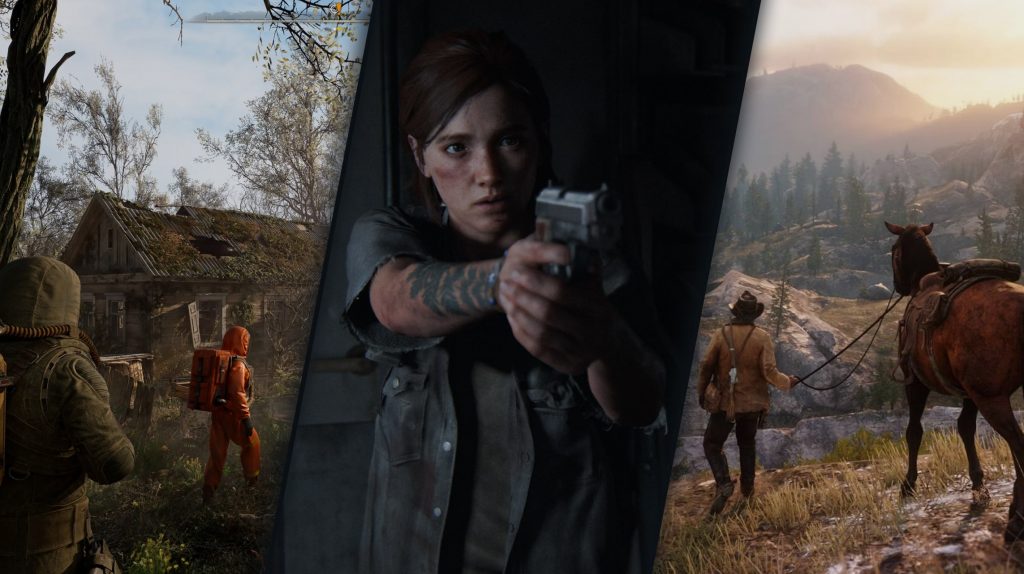
Realistic (especially hyperrealistic) art styles come with some clear strengths:
- Immersion and emotional impact: Hyperrealistic games excel at pulling players into believable worlds. The lifelike detail can make you feel like you’re there, heightening emotional connections. Subtle facial expressions and body language, for instance, can convey character emotions powerfully in a realistic art style. Story-driven games like The Last of Us or Red Dead Redemption leverage realism art to make their narratives more impactful – you relate to characters as if they were real people in real settings.
- Visual wow factor: Hyperrealistic graphics can inspire a certain awe. Each new console generation, we see big-budget titles pushing the bar of fidelity. From ray-traced lighting to ultra-high-resolution textures. They show off what the latest hardware can do. Realistic visuals often act as a technical showcase, attracting players and press with their blockbuster, film-like spectacle. This cross-media appeal aligns games with Hollywood production values, potentially drawing in audiences who love movies and TV realism.
- Relatability and genre fit: Because they depict life “as we know it,” realistic graphics can make it easier for players to understand the game world instantly. For certain genres and themes – say, a war simulator, a sports game, or a gritty crime drama – a realistic art style sets the appropriate tone and authenticity. It can also be crucial for VR experiences and simulators, where the goal is to trick the brain into believing the virtual world.
However, chasing realism also has some downsides and challenges:
- High resource demand: Crafting hyperrealistic art is expensive and labor-intensive. It requires highly detailed models, textures, complex lighting, and lots of expert hands on deck. This often means larger teams, longer development times, and bigger budgets. Small studios can find this approach prohibitive. In short, realism art can be a luxury of AAA studios – indie developers usually just can’t splurge on photo-realistic models and mocap sessions.
- Technical constraints and performance: Pushing graphics to be ultra-real also pushes hardware to its limits. Hyperrealistic games typically need top-of-the-line GPUs/CPUs and plenty of memory to run well. Not all players have high-end PCs or new consoles, so ultra-real games may alienate players on lower-end systems. Even with good hardware, developers must grapple with optimization issues (frame rate drops, huge downloads, etc.). In contrast, a simpler or stylized art direction can often run smoothly on a wider range of devices. If you want your game to be accessible on mobile or the Nintendo Switch, for example, full realism might simply be off the table.
- The uncanny valley risk: Almost-real can sometimes be creepier than not-at-all real. When realistic graphics aren’t perfect, human brains notice. Slightly stiff facial animations or odd character eyes can fall into the “uncanny valley”, where characters look human but not quite, causing discomfort. This risk is unique to realism – stylized characters get more leeway because they aren’t expected to look photo-perfect.
- Shorter shelf life: Ironically, the closer a game comes to cutting-edge realism, the more quickly it can become visually outdated. Graphics tech evolves rapidly. A game that was lauded for jaw-dropping realistic graphics in 2015 might look merely “okay” by 2025 standards. By contrast, stylized art ages more gracefully – we’ll talk about that next.
Pros and cons of stylized art
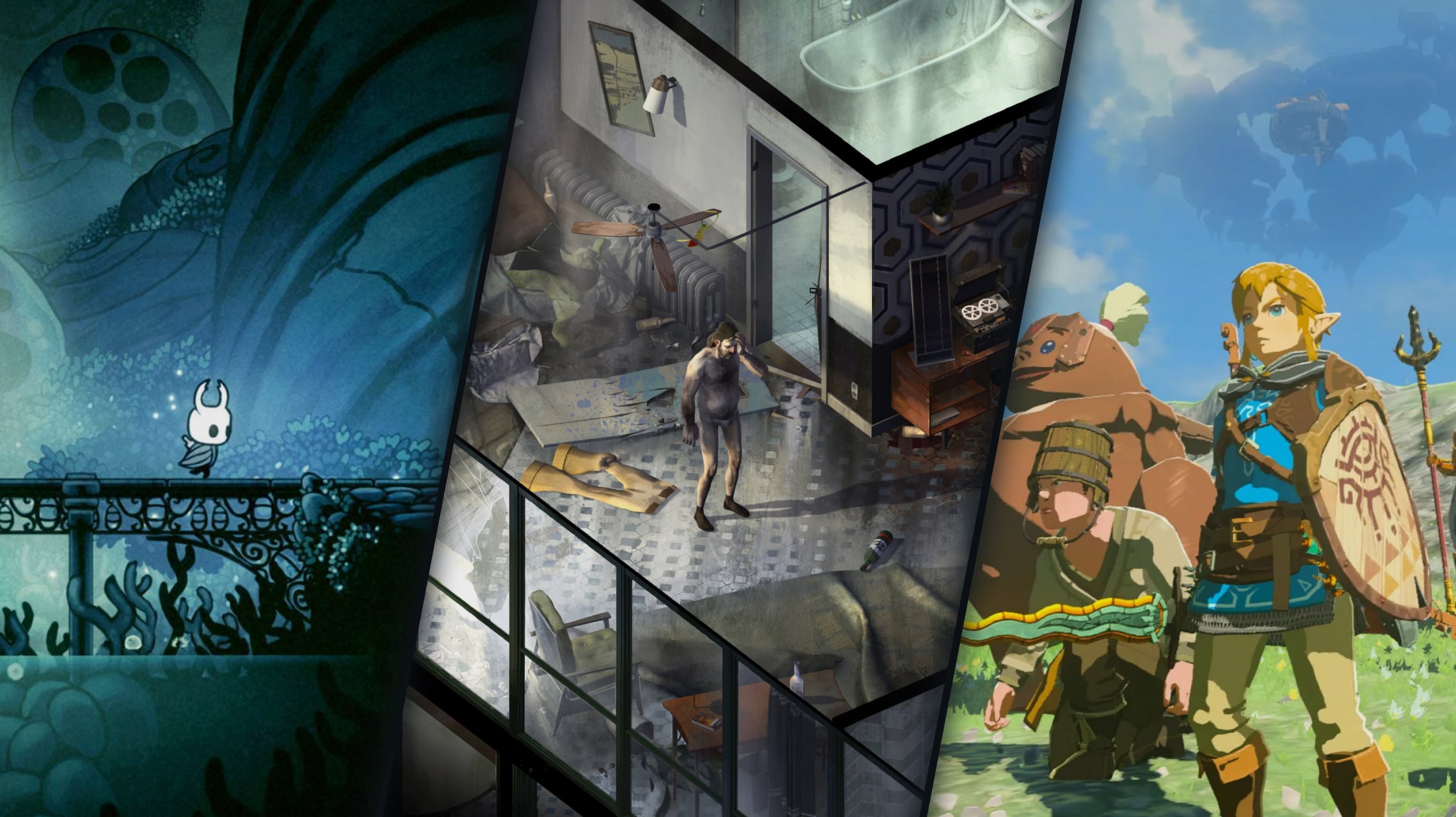
Opting for a stylized art style offers a very different set of advantages:
- Timeless aesthetic: Stylized games often have a timeless quality. Because they aren’t aiming for realism, they don’t directly compete with ever-improving graphics technology. A well-crafted cartoon or painterly style can still look beautiful many years later, because it was never about technical realism to begin with. Stylized art can sidestep the “aging curve” that realistic games face, giving your game a longer shelf life as a visual classic.
- Creative freedom and identity: Stylized art lets artists run wild with creativity. This freedom can lead to truly unique, memorable designs that stand out in a crowded market. Bold silhouettes, eccentric characters, and imaginative worlds are easier to achieve when you’re not strictly imitating life. This distinct visual identity can become a selling point – many players are drawn to games that look different from anything else out there. A striking art style (Journey’s minimalist landscapes, melancholy of Disco Elysium, or Hollow Knight’s unique vibe) acts like the game’s signature. In an industry flooded with similar-looking titles, stylization helps a game pop.
- Lower technical requirements: Generally, stylized graphics can be achieved with fewer resources and can run on less powerful hardware (this isn’t a hard rule, but it’s often true). This opens your game to a wider audience and can shorten development cycles. For small studios or indie projects, a stylized approach is often more feasible. Many mobile games and indie hits favor stylized art, and it’s partly an artistic choice, but also a practical one.
- Enhanced gameplay readability: Stylized art isn’t just about looks – it can also serve gameplay. By exaggerating important elements (like making enemies a bright color or giving characters outsized weapons), developers ensure that players instantly recognize what’s happening. In fast-paced games, a stylized approach can make it easier to distinguish friend from foe or navigate the environment, because the art can avoid the “clutter” of reality.
However, stylization has its own potential downsides:
- Niche appeal and misconceptions: Not everyone immediately clicks with a stylized look. Some gamers automatically associate cartoony or abstract graphics with children’s games or lower-budget projects, which can be a hurdle if you’re making a serious or horror game in a non-realistic style. The rich emotional story of Ori and the Will of the Wisps or Valiant Hearts might be overlooked by players who assume the art style means it’s “for kids” or not their genre. This is largely a perception issue – one that’s slowly changing as more players appreciate diverse video game art styles – but it exists.
- Artistic consistency and skill: Doing stylization well can be just as challenging as doing realism art. It’s not a shortcut; in fact, it demands a clear artistic vision. Every element must feel like part of the same cohesive style. If done poorly, a stylized game can look cheap, as if the developers “cut corners” (this sometimes happens when stylization is used as an excuse for low effort, rather than a deliberate style). Great stylized art often requires great artists with strong fundamentals in color, shape, and design to create a unified look.
In summary, realistic vs stylized art in games is a trade-off: realism brings immersion and spectacle at the cost of resources and longevity, whereas stylization brings creative freedom and durability at the risk of narrower appeal if done poorly. Now, how do you decide which path to take for a given game? Let’s talk about that.
Choosing the right style: gameplay, genre, and audience
So, when it comes to realistic vs stylized graphics, how do you decide which approach is the right fit for your game? The answer depends on a mix of factors – the game’s design goals, technical constraints, and who the players are. Here are some key considerations:
Game genre and vision
Genres like simulators, realistic racing/sports games, gritty shooters, or grounded narrative adventures often benefit from realism art to meet player expectations of authenticity. For instance, a WWII strategy game or a NBA basketball game gains credibility if it looks like the real thing. If your game is a high-fantasy RPG or a platformer, a stylized look might better capture the intended mood. Nintendo’s Mario games embrace bright, stylized worlds that signal “fun for all ages.” Meanwhile, a horror survival game like Resident Evil leans realistic to amplify tension with shadows and gore. There are exceptions everywhere, but generally consider what art style will enhance your gameplay and narrative.
Target audience
Who is the game for? Different demographics have different tastes in visuals. A realistic military shooter might target an older teen/adult audience that expects a certain level of grit and detail. A cute farming simulator or a casual mobile puzzle game might target a broader or younger audience that prefers approachable, charming graphics. Also, in different regions, art style preferences tie into cultural tastes. Western AAA studios have historically tended towards realistic (valuing games as cinematic experiences), whereas Eastern studios often stylize (valuing games as a form of art and expression distinct from reality). Nowadays, these lines blur, but it’s still a factor.
Market orientation
Commercially, realism art tends to dominate big-budget marketing. The flashy E3 trailers that get general news coverage are often the hyperrealistic ones – they look closer to Hollywood, so they’re easier to market as a big event. Major franchises (Grand Theft Auto, Call of Duty, Assassin’s Creed) push realism to signal “AAA quality” to consumers. There’s a belief that realism sells “more” in the mainstream because it looks like what non-gamers expect modern games to look like. Stylized games, however, have proven their commercial might as well. Games like Stardew Valley, Hollow Knight, Darkest Dungeon, and many, many others became huge hits, partly because their unique art drew attention in a crowded market. In fact, for indie developers, a striking art style is often a marketing strategy. Players scrolling through Steam or YouTube shorts might pause when they see an unusual art style.
Budget and team skills
This is the practical reality check. If you’re a small team or working with limited funds, pursuing a hyperrealistic art style is risky. Realism art demands lots of content (detailed assets, scans, high-end VFX) and specialized expertise (technical artists, photogrammetry, etc.). Going down that path without resources can lead to a half-baked result. Stylization can be more forgiving budget-wise – you might achieve a gorgeous look with a handful of talented artists. So, identify your team’s strengths and match the style to the talent and tools you have.
Platform and engine limitations
Where will your game live? If you’re targeting smartphones or mobile consoles, ultra-realistic graphics might not be feasible. You might stylize by necessity. If you’re developing on a next-gen console or PC with Unreal Engine 5, you have access to tools that make realism easier (like Unreal’s MetaHuman for realistic characters). Sometimes the engine’s strengths influence art direction. Consider if the technology you plan to use has any biases or limitations that favor one style.
Ultimately, choosing realistic vs stylized art isn’t an either/or binary. Many projects find a sweet spot that serves their specific needs. Some developers even prototype in a simple art style first (for speed) and then decide if a more realistic pass is worth it for the final product. Both choices are valid – what matters is that the visuals and gameplay harmonize.
Stylized realism: Blending the best of both
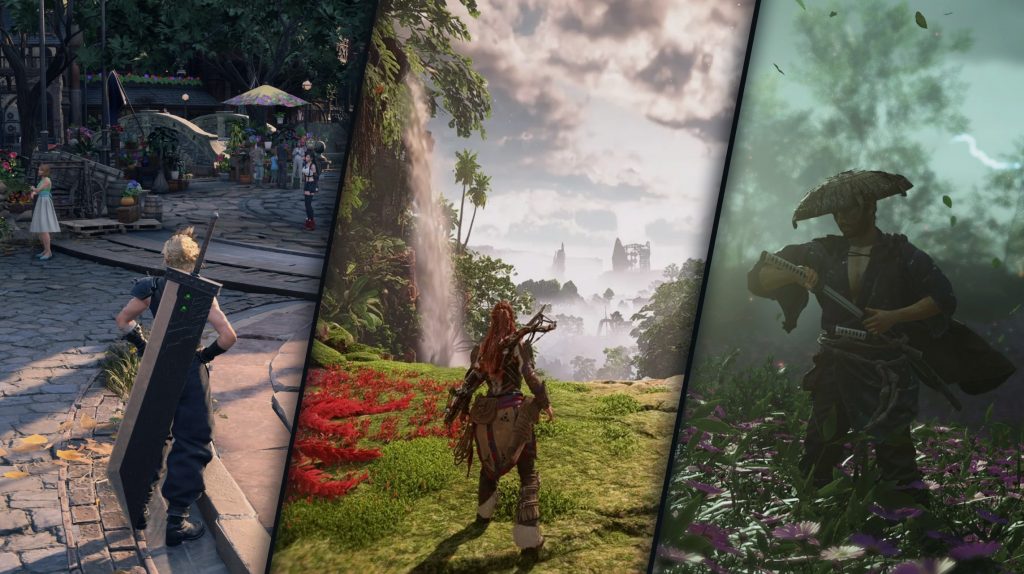
When facing realistic vs stylized graphics dilemma, many games land in a hybrid middle ground often called stylized realism or semi-realism art. This approach aims to blend realistic detail with stylized design, capturing a unique look that feels grounded yet artful.
In stylized realism, developers might use realistic rendering techniques (lighting, physics, detailed textures) but apply them to characters or worlds that have exaggerated or fantastical designs. Alternatively, the characters might be fairly realistic, but the color palette or effects are more stylized and vibrant. The goal is usually to get the impact of realism – immersion and wow-factor – without being constrained by reproducing reality one-to-one.
A great example is the Final Fantasy series. Modern Final Fantasy games feature characters with anatomically plausible proportions and highly detailed costumes (realism), yet their overall aesthetic is clearly influenced by anime and high fantasy.
Fighting games often do stylized realism well – take Street Fighter 6 or Tekken 7/8. The fighters’ musculatures and clothing have realistic detail, and the games use dynamic lighting and shadow like a realistic title would. Yet the art direction exaggerates personalities, colors, and special effects to be larger-than-life. The result is a blend that feels visceral and modern but still distinctly a stylized art direction.
Another form of stylized realism appears in games like The Witcher 3, Horizon Zero Dawn or Ghost of Tsushima. These games are largely realistic looking at first glance – detailed forests, human characters, etc. – but the art teams employ stylization in the color grading, lighting, environments, costuming, and creature designs. You might not think of these as “stylized” per se, but they’re certainly not aiming for mundane modern-day realism; they’re going for an idealized, dramatic look. In essence, they are realism plus an extra artistic twist.
The pros of stylized realism are that you can appeal to players who enjoy a realistic look (and leverage powerful engines for eye candy) while also crafting a distinct visual identity. It’s a way to avoid the “generic” feeling that pure realism art can sometimes bring. Your game can look beautiful, but not like every other realistic game.
However, the challenge of stylized realism is finding the right balance. It can be a delicate art direction task to decide what elements to push stylistically and what to keep realistic. You need artists who understand both ends – they must know how to leverage realistic techniques and have a strong sense of creative design. When it clicks, though, this hybrid approach often produces refreshingly original games.
Conclusion
At the end of the day, there’s no one-size-fits-all answer in the realistic vs stylized art debate – and that’s a good thing. The beauty of game development is that it’s a blend of art and technology, creativity and realism. As we’ve seen, hyperrealism can deliver jaw-dropping worlds that make players feel like part of a blockbuster, while unique, stylized art can create beloved worlds that stand the test of time.
Players ultimately care about the gameplay and the feeling your game gives them. The art style is a vehicle for that feeling. When chosen and executed thoughtfully, it amplifies the game’s impact.
Game art production with N-iX Games
At N-iX Games, we help studios make the tough choice of realistic vs stylized graphics. As a trusted game art outsourcing partner for companies like Paradox Interactive, Wargaming, Supermassive Games, and others, we’ve delivered 100+ projects across both 2D and 3D video game art styles — from stylized indies to photorealistic AAA titles. Our 65+ artists and experienced art directors ensure style consistency, efficient scaling, and visual impact across any platform.
We provide full-cycle art production services tailored to your vision — from early concept to in-game implementation. Take a look at our previous works!
The Bazaar – stylized visual identity & worldbuilding
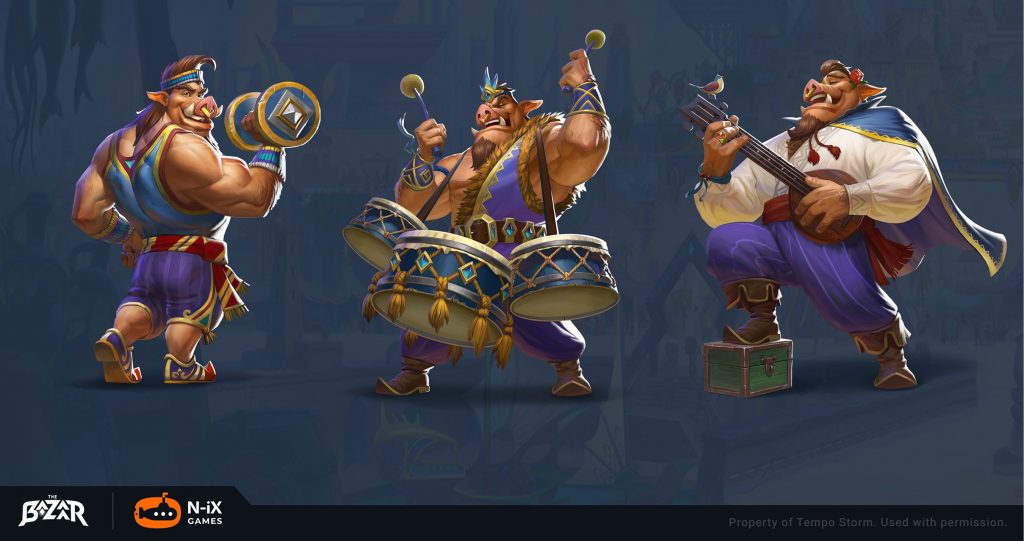
The Bazaar is a genre-defying roguelike-deckbuilder-meets-PvP-auto-battler, and one of the most creatively ambitious stylized projects we’ve had the pleasure to work on. Developed in close partnership with Tempo, N-iX Games took the lead on art direction, crafting a world that blends Middle Eastern bazaars with sci-fi skylines and steampunk vibes. Our team designed the game’s vibrant environments, from sunlit trade ports to neon-lit alleys, each filled with cultural detail and personality. We created a rich roster of diverse heroes, hundreds of hand-painted items, interactive 3D boards, and a responsive UI full of character.
Sniper Ghost Warrior Contracts 2 – realistic weapon modeling
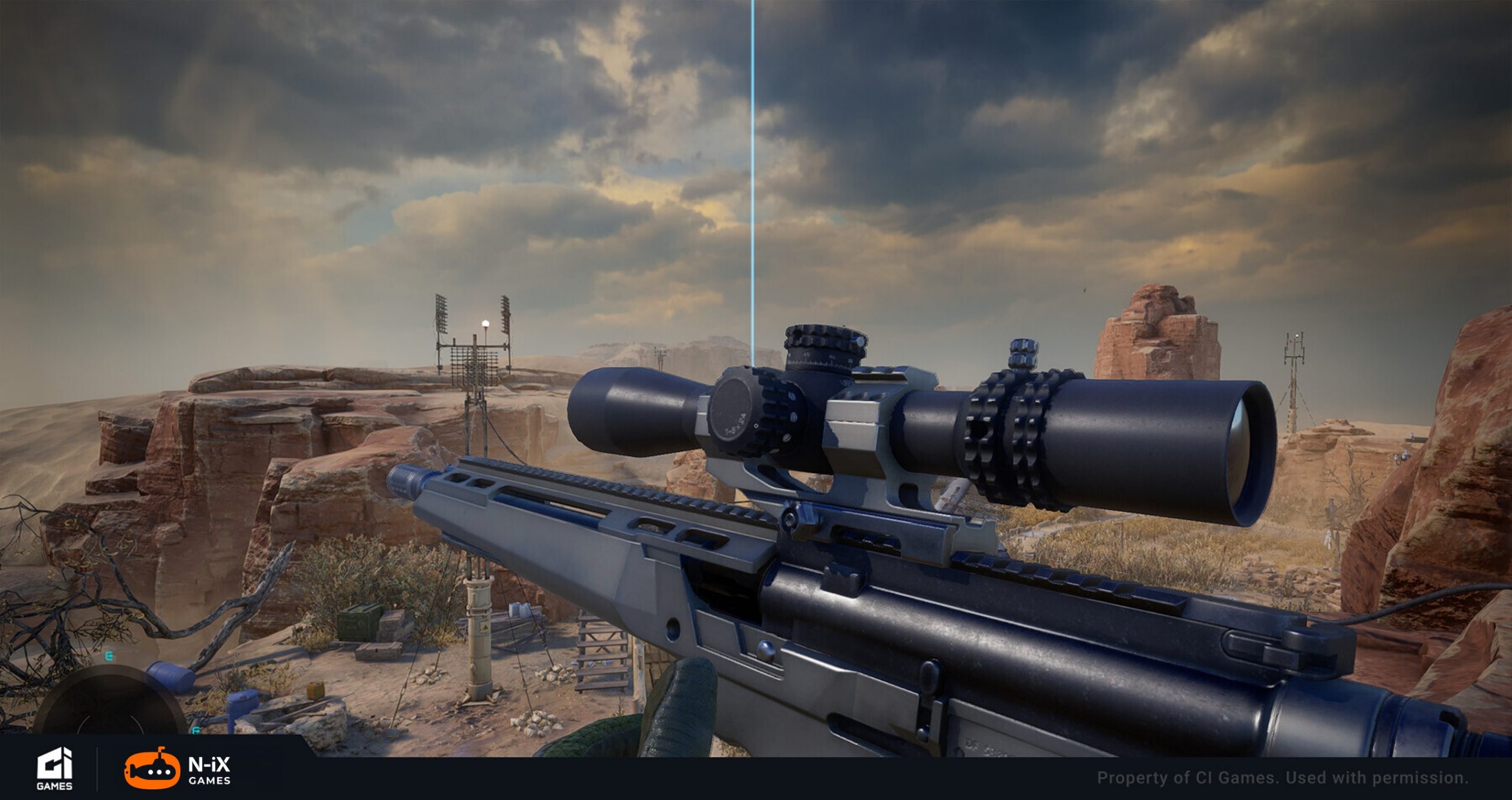
For Sniper Ghost Warrior Contracts 2, realism wasn’t just a goal — it was a requirement. N-iX Games was brought in by CI Games to create a lineup of ultra-accurate 3D weapon models that matched the game’s grounded, tactical gameplay and high graphical standards. Set in a fictionalized Middle Eastern warzone, the game demanded high detail across all visual assets.
The Dark Pictures: Switchback VR – semi-realism art production
In The Dark Pictures: Switchback VR, horror meets next-gen virtual reality. N-iX Games played a central role in bringing it to life. Partnering with Supermassive Games, we contributed across multiple disciplines: Unreal Engine programming, 3D art production, level design, and continuous tech support. Our artists created a variety of weapons, enemy characters, and environmental props tailored for immersive VR interaction. This project showcases the strengths in semi-realistic visual design blended with high-tech hardware.


